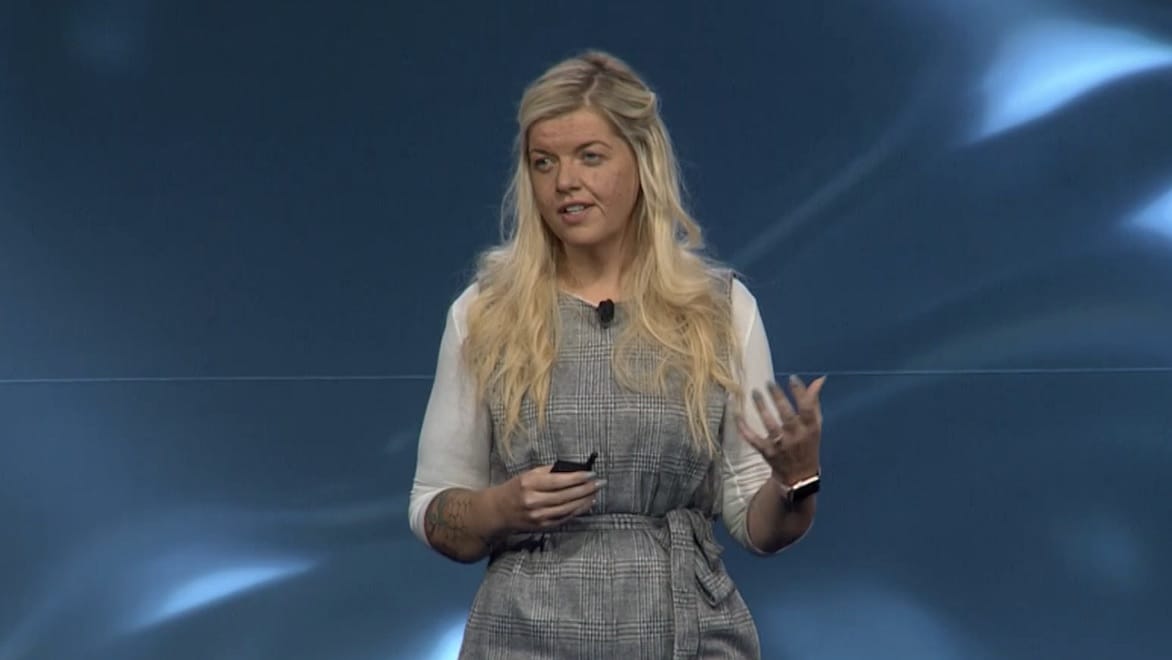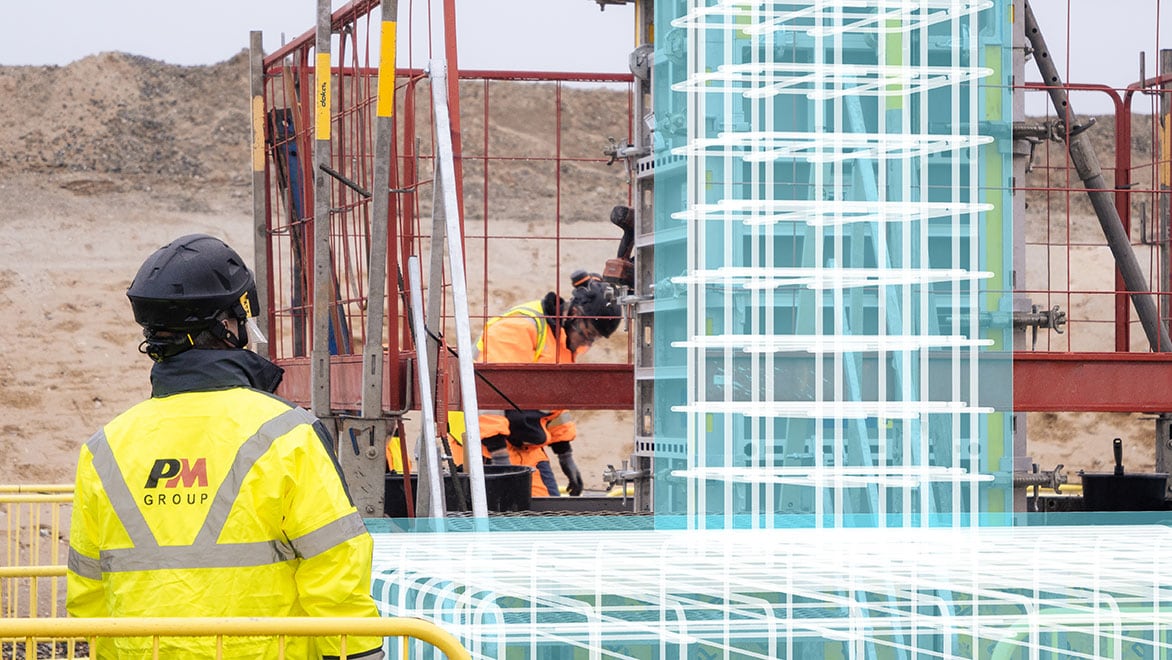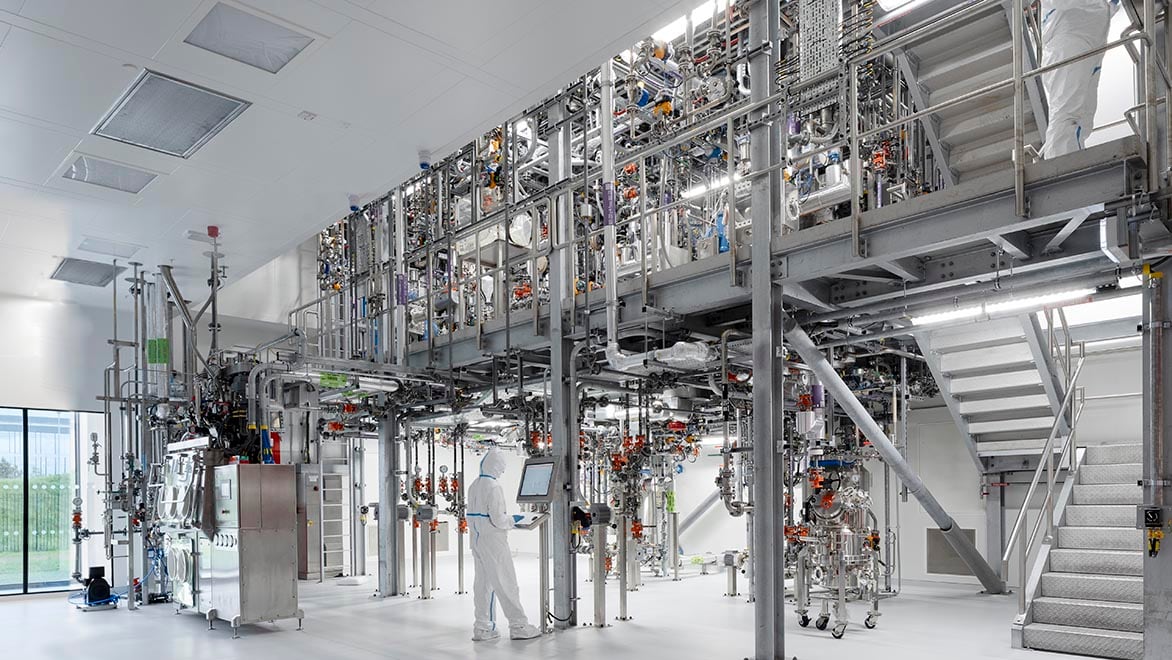PM GROUP
A people-first mindset drives digital transformation
STATE OF DESIGN & MAKE
Share this story
Investment in talent, training, and technology helps attract and retain employees
As growth surges in the architecture, engineering, and construction (AEC) sectors, the industry faces many challenges in meeting demand, from supply chain disruptions to skilled labor shortages. Many firms are struggling to attract the talent they need to maintain a healthy pace. To cultivate its skilled workforce, international project delivery specialist PM Group is leading with people instead of technology, using tech to support talent instead of the other way around. This way, the firm is increasing not only its head count, but also the quality of its work.

PM Group has recognized the need to focus on cultivating talent as competition for skilled employees in the AEC industry heats up. Image courtesy of PM Group.
Fueling growth in the AEC industry
The construction industry is resilient, much like the structures it builds that can withstand hurricanes, earthquakes, and floods. But despite a strong start to the year, significant challenges, including volatile materials costs, supply chain obstacles, shifting talent models, and the impact of those natural disasters on populations around the world, persist in the architecture, engineering, and construction sector.
Although economists continue to tease the prospects of a global recession, more than half of construction firms in the US (53.7%) expect their sales to grow over the next six months, and nearly four in 10 (38.9%) expect their profit margins to increase in the same period, according to the January 2023 report from Associated Builders and Contractors (ABC). Globally, the construction industry is expected to reach an estimated $10.5 trillion by 2023 and is forecast to increase at a compound annual growth rate of 4.2% from 2018 to 2023, according to a Research and Markets report.
“The industry has never been busier,” says Coral Butler, group head of digitally-enabled lean project delivery at international architecture, engineering, and construction firm PM Group. To adapt to the accelerating pace of growth, the Irish-headquartered company introduced a four-year digital strategy beginning in 2021. Its roadmap for increased technology adoption focuses on cloud-based collaboration and building information modeling (BIM) data using systems such as Autodesk Construction Cloud. By embracing data insights and digital workflows, PM Group saw that it could deliver projects to clients with increased speed, safety, consistency, and quality.
And yet, technology alone can’t be a difference-maker, Butler admits. To create the impact it wanted, PM Group recognized that it had to focus as much on cultivating talent as it did on acquiring technology. “I’m 20 years in the industry, and up until the past five or six years I was always more focused on the technical side of things,” she says. “But as I’ve matured, my appreciation of people has really come to the forefront. My focus is on people because technology enhances what people do.”

PM Group's Coral Butler presents a Theater Talk onstage at Autodesk University 2022 about the company’s journey to align technology and talent.
Transformation requires talent
Talent management is as much about doing the right thing for the business as it is about doing the right thing for employees, according to Butler.
This is evident in the ongoing worker shortage within the AEC industry: In the US, construction averaged more than 390,000 job openings per month in 2022, which is the highest level on record, according to ABC. Nearly one in four construction workers is older than 55, and those workers’ retirements will have an ongoing impact on the US workforce. Around the globe, Statistics Canada reports that construction has record-high job vacancies; and the Office for National Statistics notes a similar trend in the UK. Similar shortages are widespread across the EU, which is also struggling with high inflation rates; and in Japan, which is suffering a labor shortage due to its aging population.
Autodesk discovered similar pain points around talent and labor in its global research report 2023 State of Design and Make. It found that business leaders representing companies that design and make spaces, places, objects, and experiences say that attracting and retaining talent is one of their top challenges.
Adding to an increasingly heated competition for talent, work itself is fundamentally changing: 72% of business leaders say the workforce has evolved more in the past three years than it had in the previous 25 years, according to Autodesk’s report. Because of that evolution, 90% of leaders say upskilling is important to their company. Another 50% say they’re hiring employees who lack necessary skills with the intention of training them on the job.
All of this reinforces the importance of talent in digital transformation initiatives. While enterprises can invest untold sums into acquiring technology, tools are only effective if companies have the right quantity and quality of human resources to use them.
“Up until the past five or six years I was always more focused on the technical side of things. But as I’ve matured, my appreciation of people has really come to the forefront. My focus is on people because technology enhances what people do.”
—Coral Butler, Group Head of Digitally-Enabled Lean Project Delivery, PM Group
From talent shortage to talent surge
In this context, when so many firms struggle to attract and retain talent, PM Group has managed to grow its workforce significantly by treating people as investments instead of commodities. In fact, PM Group has hired a significant number of people across the globe in the last 18–24 months.
This abundance of talent creates new and different challenges compared to scarcity. “It’s been huge growth,” says Butler. “We needed to ensure our competencies, skill sets, and training made sure that the way we’re working wasn’t polluted or diluted by the influx of a new group of people.”
The same people-centric strategies that are helping PM Group avoid a talent shortage are also beneficial for its talent surge, according to Butler. For instance, the company promotes a culture of work/life balance and mental wellness. That means embracing time-saving measures that advance projects quickly while also giving employees space to take breaks when needed, reducing burnout.
“My job as a manager is to ensure my team can be the best it can be to deliver the best quality that can be delivered,” says Butler, who adds that employee wellbeing impacts work quality, which impacts project success, which ultimately impacts client satisfaction.
To that end, other best practices include instituting regular “temperature checks” between leaders and team members, using 15-minute huddles to improve communication and teamwork, managing client expectations to ensure realistic scopes and schedules, and providing mental health resources to help employees and their families cope with stress.
Recognition—via compensation, promotion, or simply verbal praise in front of peers—also figures prominently. “When I accepted my role, it was with the condition that I would be able to give people the recognition they deserve,” Butler says. “Because when you recognize people within a team, that team sticks with you. They’re loyal to you, and they’re loyal to the company.”

PM Group uses models and a logistics app to capture and share real-time, immersive jobsite information. This approach improves safety and saves time, effort, and energy. Image courtesy of PM Group.
Empowering people with technology
Putting people first primes PM Group to make the best possible use of technology. The reverse is also true: Technology primes the company to make the best possible use of its people.
PM Group uses models and a proprietary logistics app to capture and share real-time, immersive information about jobsites. This approach enables more effective safety training and allows workers and contractors to familiarize themselves with sites before actually stepping foot on them. In addition to improving safety, that streamlines work, saving time, effort, and energy.
Using better data enables both talent and technology, to make sure teams and tools have the information and inputs they need. “Every day, our logistics app is updated with movement of crane activity or pedestrian changes so that information is accurate that day rather than something that was made two months ago,” says Butler.
PM Group extensively interrogates every model it receives from internal and external engineers. “We give it a scorecard and if it fails on something that we feel is critical for model health, then we will not take it on. We’ll say, ‘It failed but here’s how to fix it.’ And then we’ll ask them to resubmit.”
Putting models through increased rigor on the front end ensures more efficient work and improved quality control on the back end. It has even resulted in new job roles, according to Butler, who created the position of “model QA technician” to provide a data liaison between engineers and clients. Though the role didn’t exist a few years ago, she now has three model QA technicians on her team. “Every project wants one,” she says of the role. “It’s really improving the quality of our submissions and is educating our clients on what they are getting from the engineer of record.”

A PM Group-designed, high-potent drug facility, winner of the 2022 ISPE FOYA Facility Integration Category award. Image courtesy of PM Group.
Near-term actions fuel long-term advantages
To maintain its positive momentum for its people and technology, PM Group embraces a long-term view of staffing and professional development. That starts with skills assessment and planning.
“Skill set evaluation is really underestimated in the industry. Everybody’s clamoring to fill roles without really understanding competency,” Butler says. PM Group applies the same effort to engineering career paths as it does to engineering buildings. “It’s understanding where people are at right now, where they want to be in five years, and how you can support that.”
This also requires understanding where your business is going, what skills it will need, and how you can prepare the people you have today for the roles of tomorrow—for example, by embracing the idea of digital apprenticeships.
“If I wanted someone to come into the trade and I wanted to make them an electrician, there are apprenticeships to help them do that. But if I want somebody to be a BIM clash manager, there are no apprenticeships to put them on that path,” Butler says. “That’s a huge miss in our industry. We need to be a little bit more nurturing.”
Nurturing isn’t about being soft, Butler says—it’s about being strategic. When leaders know what their team members are good at and what they want to achieve, it’s a clearer path to making smart investments in people and technology that will yield positive results for the individual and for the business.
2023 State of Design & Make
Find out what’s driving change in architecture, engineering, construction, product design, manufacturing, games, and filmmaking in this new global research report from Autodesk.